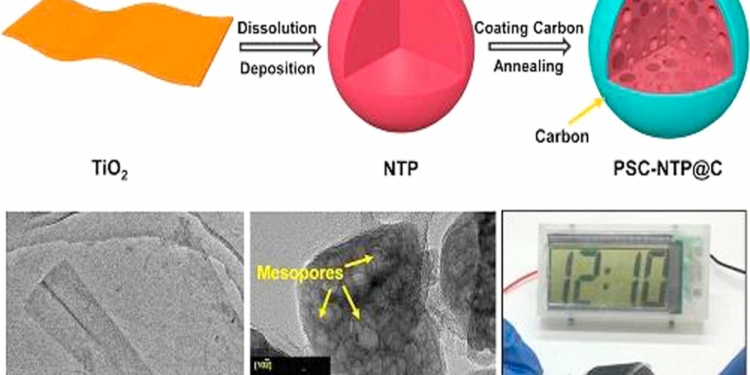Source: Science Trends news
by Qi Yang & Chunyi Zhi
In the age of post-lithium-ion batteries featuring dilemmas including rising demands, a sharp decline in lithium reserves, and severe safety issues, aqueous energy storage systems (AESSs) demonstrate their advantages due to their low cost and excellent safety performance in nature.
By replacing organic solvents adopted by common lithium-ion batteries (LIBs) with aqueous electrolytes, AESSs, such as sodium ion capacitors, exhibit eco-friendly traits and inherent safety, which fits modern society’s theme of “green and sustainable.” Furthermore, the low-cost superiority also helps aqueous sodium ion capacitor to transform intermittent renewable energy sources such as wind and solar energy into continuous electricity in the power grid.
However, the practical application of aqueous sodium ion capacitor still suffers from technical problems like the shortage of high-performance electrode materials. NaTi2(PO4)3, a kind of Na super ion conductor, possesses suitable working potential and low solubleness and is promising for adoption in aqueous sodium ion capacitors. Nevertheless, conventional NaTi2(PO4)3 with irregular morphology and large size only exhibits a low capacity and short lifespan. This is mainly due to the outdated synthesis process, which hinders releasing the full potential of NaTi2(PO4)3 in AESSs.
To tackle this problem, for the first time, we present a novel nanotechnology based on the liquid transformation method to synthesize porous single-crystal NaTi2(PO4)3. Different from the traditional solid-state reaction route established onto the high-temperature annealing process, our method mildly fabricates NaTi2(PO4)3 in a low-temperature liquid environment. It is this superior reaction situation that generates a high-quality NaTi2(PO4)3 with regular morphology, small particles, porous nanostructure, and single-crystal properties. Furthermore, this nanotechnology was successfully extended to two other different raw materials to synthesize NaTi2(PO4)3, demonstrating its universality as a general methodology and will absolutely receive intensive attraction.
Motivated by this advance in nanoscale synthesis process and the generated properties, this high-quality NaTi2(PO4)3 is supposed to exhibit desirable performance. As the negative material for aqueous sodium ion capacitor, NaTi2(PO4)3 electrode demonstrates an outstanding rate capability of 80-102 mA h g-1 at varied current densities of 0.5-3 A g-1, remaining 80% capacity even at sixfold charge rate (fully charged in less than two minutes). This fast-charge performance, which has never been reported in common mobile phones and electric vehicles, will undisputedly be admired by consumers.
Compared with traditional LIBs, one advantage of aqueous sodium ion capacitors is their application in flexible electronic devices which can benefit from the inherent safety of aqueous electrolytes. Thus, a flexible aqueous sodium ion capacitor was assembled by coupling the NaTi2(PO4)3 electrode with a porous carbon electrode. Surprisingly, this flexible device could steady ambient work without any protection measures like encapsulation adopted by traditional LIBs, which lowers the cost to a great extent and makes this device desirable to most people. Furthermore, the performance of this device is rarely effected at a continuous bending state from 0 to 180 o, demonstrating its excellent flexibility, vital in wearable electronics.
In conclusion, dilemmas that arise in the age of post-lithium-ion batteries force us to seek promising energy storage technologies to deal with the energy issue, which gives AESSs the golden opportunity to rapidly develop. Besides, the highly developed nanotechnology can also help aqueous sodium ion capacitors tackle their technical challenges. Therefore, it is likely that aqueous sodium ion capacitors will play a significant role in our daily lives in the near future.
These findings are described in the article entitled Porous single-crystal NaTi2(PO4)3 via liquid transformation of TiO2 nanosheets for flexible aqueous Na-ion capacitor, recently published in the journal Nano Energy.
This work was conducted by Qi Yang, Zijie Tang, Zhuoxin Liu, Hongfei Li, and Chunyi Zhi from the City University of Hong Kong, Sihan Cui, Yifei Ge, and Jianbo Liang from Capital Normal University, and Na Li and Haiyan Zhang from the Guangdong University of Technology.


































